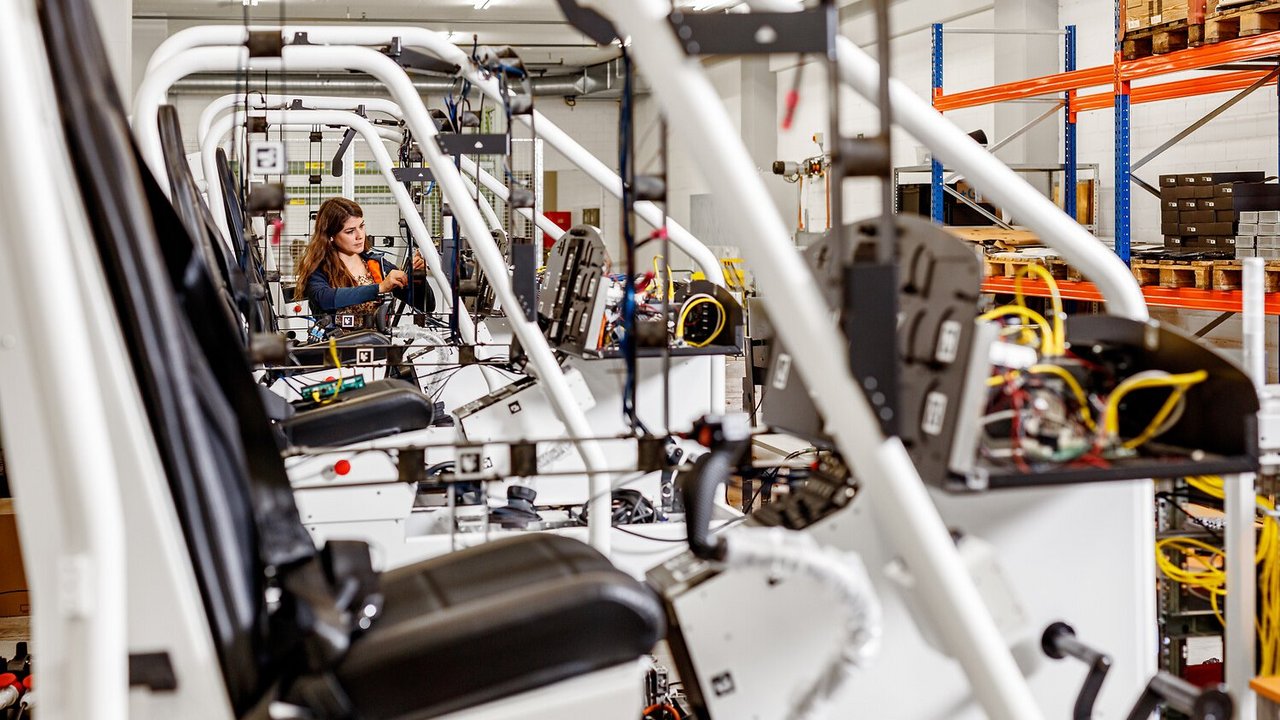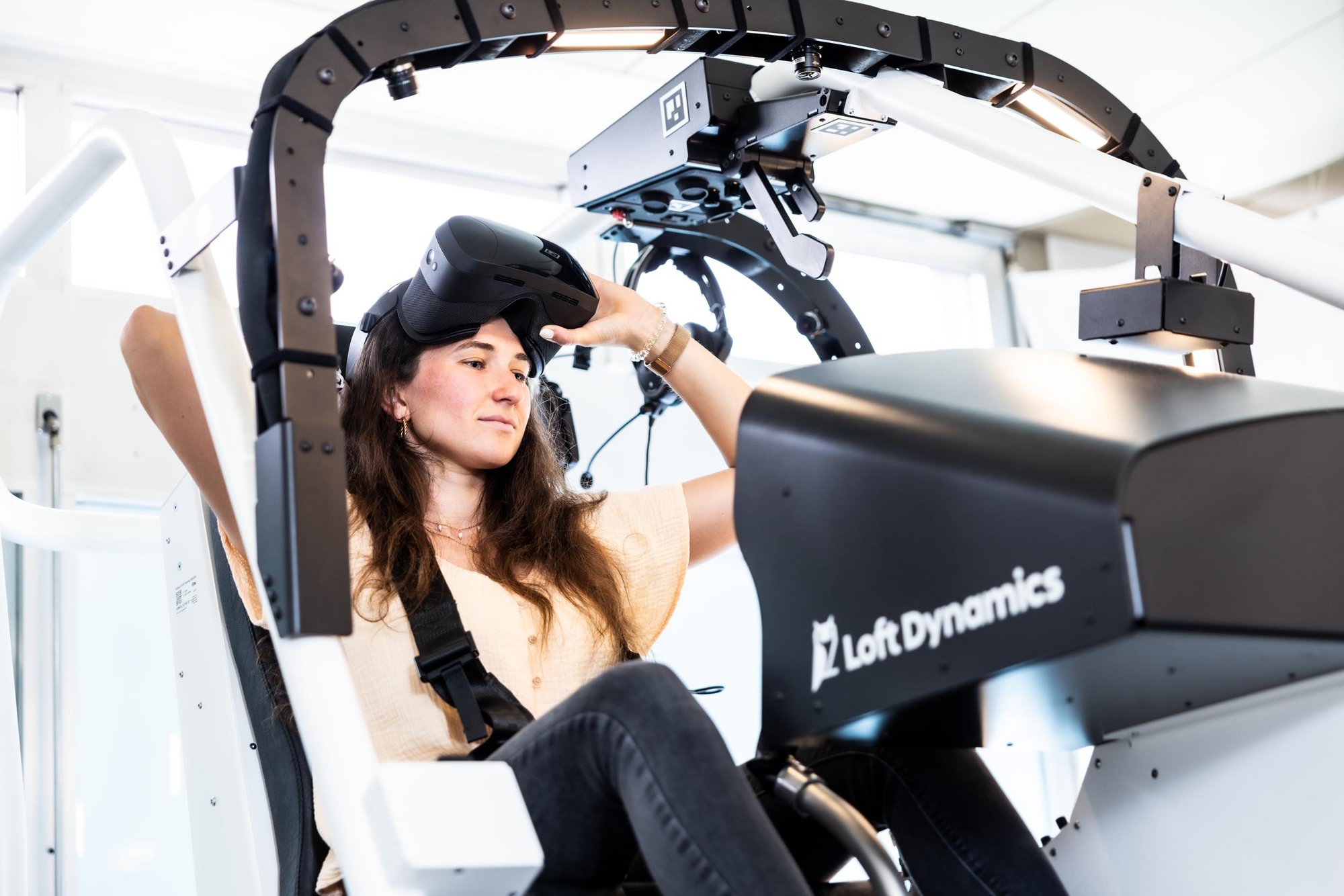EASA’s New Ruling Drops FFS Requirement for Helicopter Training and Checking, Prioritizes Loft Dynamics VR FSTD
ZURICH, SWITZERLAND (Sept. 16, 2024) — The European Union Aviation Safety Agency (EASA) has issued a landmark update to its Aircrew Regulation (EU) No 1178/2011, removing the mandate that full flight simulators (FFS) are to be used for helicopter training, skills tests and proficiency checks ahead of other flight simulation training devices (FSTDs). Helicopters remain the last-resort option due to safety risks. Under the new regulation, EASA has uniquely authorized Loft Dynamics’ VR (virtual reality) H125 FSTD for all aspects of training and checking. Loft Dynamics is the only training device in the world approved by Airbus Helicopters and is now the most extensively qualified H125 FSTD in Europe.
A New Benchmark in Helicopter Training
“This ruling sets a new benchmark for safety and accessibility in helicopter training across Europe,” said Fabi Riesen, founder and CEO of Loft Dynamics. “Helicopter training has long been constrained by the high costs and limited availability of full flight simulators, resulting in increased travel time and expenses for regular training and checking, as well as the lack of realism and capabilities in other traditional simulators. With one-third of all helicopter accidents occurring during training and checking, there is an urgent need for more practical and safer training solutions. EASA’s updated regulations demonstrate a commitment to improving pilot training safety and accessibility through innovation.”
EASA’s Key Updates
To address safety and accessibility challenges, EASA has introduced the following updates:
- FCL.740.H Revalidation of Type Ratings – Helicopters: Pilots of single-engine helicopters (maximum take-off mass of 3,175 kg) with at least six hours as Pilot in Command (PIC) during the validity period can now revalidate their type rating with refresher training on FSTDs, aircraft, or a combination of both, instead of undergoing a proficiency check. This applies to Airbus H125 and Robinson Helicopters.
- Annex I, Appendix 9: The requirement to prioritize FFSs for training, skill tests, or proficiency checks for non-complex helicopters has been removed. Loft Dynamics’ H125 VR FSTDs can now be used equivalently, regardless of FFS availability.
Out with the Old: Aviation Embraces VR
The aviation industry is increasingly moving from traditional FFSs to more affordable, convenient, and equally realistic FSTDs. Loft Dynamics has cemented itself as the industry frontrunner among cutting-edge FSTDs, uniquely approved by Airbus Helicopters and distinguished as the only FSTD with dual qualifications from both EASA and the FAA. At the start of the year, Europe had two qualified FFSs. As of February, one was decommissioned and set to be replaced by a Loft Dynamics VR FSTD, which will be one of 15 qualified Loft Dynamics FSTDs in Europe. EASA's new ruling, which eliminates FFS reliance and approves Loft Dynamics FSTDs for all training and proficiency checks, is another proof point that this shift is not just industry-driven—regulators are continuing to align as well. This is expected to accelerate the use and adoption of Loft Dynamics VR FSTDs across Europe.
Preventing Every Third Accident
Riesen added, “Most importantly, we anticipate a sharp reduction in training accidents thanks to EASA’s update, which removes barriers that made in-air training and checking the default. We’re not slowing down in our mission to make the safest and most comprehensive training accessible to more operators and pilots worldwide—whether for the LAPD or Air Greenland. We’re set to install more simulators across Europe this year, and with recent support from EASA, we’re determined to prevent every third accident.”

A Nuuk Perspective
"Over the past few years, we have been evaluating FSTDs in collaboration with the NAA to perform all checks on the devices,” said Marco Peyer, chief flight instructor at Air Greenland. “We found nothing suitable—only systems that risked negative training. In 2022, we discovered that the Loft Dynamics device had been qualified. We conducted another assessment, this time successfully, and subsequently purchased a Loft FSTD. Since then, we've been able to conduct checks directly at our home base in Nuuk, eliminating the need for distant travel. We now do training and checks in February and March to prepare for the season, with follow-up checks in September and October as part of the second OPC."

Global Implications
EASA’s new regulatory update has global implications, as EASA and the FAA are increasingly working in tandem to address evolving aviation challenges and opportunities. This collaboration is evidenced by their recent joint pledge to tackle the aviation issues of the next decade, such as the rapid development of future technologies, as well as in the FAA’s swift qualification of Loft Dynamics’ VR FSTD following EASA’s approval. EASA’s ruling speeds up the transition toward VR FSTDs in Europe and sets a viable path for safer, more realistic, and accessible pilot training in the US and beyond. As the aviation industry contends with a severe pilot shortage and high accident rates during training, leading regulatory bodies will be paying close attention to each other’s progress.
Accessing Loft Dynamics VR H125 FSTD
For pilots looking to complete training and checking on a Loft Dynamics VR H125 FSTD, please contact info@loftdynamics.com with subject line “I Wanna Try It.” Note that for those training for the first time, Loft Dynamics provides a complementary familiarization flight on any of its simulators. All other training and checking inquiries may be directed to sales@loftdynamics.com
About Loft Dynamics
Loft Dynamics AG is the global leader in qualified virtual reality flight simulation training devices (FSTD). It is the first and only VR FSTD qualified by the FAA and the first and only VR FSTD qualified by EASA. Equipped with a 3D high-resolution panoramic view, dynamic six-degrees-of-freedom motion platform, and full-scale replica cockpit with a unique pose tracking system, our revolutionary VR simulators provide a more immersive, realistic, customizable, and safe training experience. By offering a training solution 10 times smaller and significantly more cost-effective than legacy simulators, we enhance training accessibility and scalability, empowering highly skilled pilots to meet global demand. We serve leading manufacturers, airlines, operators, schools, and organizations worldwide. Headquartered in Santa Monica, California, and Zurich, Switzerland, our team comprises passionate engineers, developers, and aviation experts.


